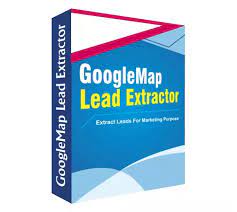Best Service of Social Media Marketing in Vancouver

Social Media Marketing Vancouver
Social media marketing is a form of digital marketing that uses social media and networking websites to promote an organization’s products or services through paid and organic means.
It is a platform where marketers can interact with customers, resolve questions and complaints, announce new products and services, get feedback and recommendations, and build their community.
Social media marketing involves activities like building a presence on social networks, spreading brand awareness, engaging prospects and customers through content, driving traffic to websites, and so on.
Social media marketers use social media to first be present on popular social platforms, find and reach customers and prospects, then promote products and services and engage audiences to increase conversions and ROI. Being the best marketing in Vancouver we provide the best and results-oriented service of social media marketing in Vancouver.
Types and Platforms in Social Media Marketing Vancouver
In a world with a population of over 7 billion, 3 billion people are active on social media. In this section, we’ll look at eight social media platforms that are essential if you want to do effective social media marketing.
Monthly Active Users: 2.38 billion (as of March 31, 2019)
Age Group: 18-45+ years old
Regardless of whether you are a B2B or a B2C brand, you need to be present on the Facebook platform. It combines the best features of almost every social media platform and chances are that your audience will use it too!
Businesses can use Facebook to share content, engage with customers, run ads, or even use it as a platform to provide customer support. While doing social media marketing in Vancouver, we emphasize Facebook organic reach and ad campaigns.
Monthly Active Users: 321 million (as of February 2019)
Age Group: 18-45+
Twitter allows you to express your opinion in 280 characters. Known for pioneering the use of hashtags, Twitter is a social media platform for users to share thoughts, reach out to brands and celebrities, and consume news and information snippets.
Brands mainly use Twitter for customer service because it is a platform that customers frequently use for timely brand interactions. For example: see how Indihome responds to customer complaints and how they project their brand image.
Twitter users tend to be more tech-savvy, so Twitter has become a hub for information discovery. Therefore, B2B and B2C brands should use Twitter to publish their content. Most of the agencies that do social media marketing in Vancouver maintain Twitter.
Monthly Active Users: 303 million (as of May 2019)
Age Group: 25-45 years old
Being on LinkedIn is a must for B2B organizations as it offers many opportunities to grow your business. Although B2B brands dominate LinkedIn, B2C brands also use them, even if it’s just to find potential employees.
For individuals, LinkedIn is a great platform to showcase their expertise and establish themselves as a thought leaders in their niche. Brands can use LinkedIn company pages like Facebook pages while maintaining a professional tone.
Monthly Active Users: 1 billion (as of March 2019)
Age Group: 18-35 years old
Instagram is a mobile-based visual platform that allows you to share images and videos. Instagram’s popularity has increased in recent years and is expected to grow even more as consumers continue to favour vertical videos, live videos and stories. Instagram launched a vertical video platform called IGTV that allows you to share videos that are longer than a minute. Many brands in Canada use Instagram to share their products. While doing social media marketing in Vancouver, we also use Instagram to share product pictures.
If you sell physical products, then you should give Shopping on Instagram a try. This is a great feature that many experts claim is the future of social commerce.
YouTube
Monthly Active Users: 1.9 billion (as of February 2019)
Age Group: 18-55+ years old
YouTube is an online video-sharing platform that allows you to view, share and upload video content. The exponential growth of video marketing has driven brands to create and share video content on YouTube extensively. If you’re planning to join YouTube, here are three facts for you to consider:
- YouTube is the second most popular search engine after Google
- Owned by Google
- If your competitors are already on YouTube, it will be more challenging to make your business brand more visible.
We use Youtube during social media marketing in Vancouver. We get the video reviews from the business customers and put these reviews on Youtube with the products.
Monthly Active Users: 265 million (as of December 2018)
Age Group: 18-45 years old
Pinterest is a great visual platform for individuals and brands to find inspiration for artistic endeavours and promote DIY activities. You’ll find tons of ideas in the form of pins (pictures) and boards (sets of pictures) about a topic.
Although Pinterest was very popular among women in its early years, a change has been observed in its use in 2016 where female users fell from 83% – 60%.
Brands can create business accounts on Pinterest as well as run ads to reach their target audience.
Snapchat
Monthly Active Users: 287 million (as of January 2019)
Age Group: 18-35 years old
Snapchat is another mobile-exclusive visual platform that has become famous for its short content visibility. Pictures and videos posted on Snapchat disappear after 24 hours. Snapchat is the most popular social platform among millennials and gen Z users. This platform is also known for face lenses (filters). Because the content is short-lived, Snapchat is suitable for creating raw, original content.
Apart from building brands organically, organizations can run ads to reach a wider audience.
TikTok
Monthly Active Users: 1 billion (as of June 2019)
Age Group: 10-29 years old
Similar to Snapchat and Instagram, TikTok is mobile-exclusive. The app, however, is primarily video-oriented and caters to a much younger audience so marketers may choose it to specifically target Gen Z users.
Influencer marketing and paid promotion are just starting to emerge. Therefore, it has tremendous potential to drive low-cost viral campaigns.
Strategy for Social Media Marketing in Vancouver
“Social media will help you build the loyalty of your current customers until they are willing and free to tell others about your business.”
~ Bonnie Sainsbury, Digital Business Strategist and Marketing Advisor
In this section, we’ll look at how you can start creating a strategy for social media marketing in Vancouver for your brand that will give your business an advantage.
Step 1: Run a Social Media Audit
Before you set goals and create a plan for social media marketing in Vancouver, it’s always a good idea to start by analyzing what has worked for your business in the past. Visit the analytics/insights section of your social media accounts and take note of the demographic characteristics of your audience, location, what types of content have worked, and so on.
Similarly, visit the referral traffic sources in Google Analytics (or the analytics tool you use) to understand which platforms are most useful for driving traffic to a website.
Competitor analysis will allow you to track what is currently working and evaluate their strengths and weaknesses when it comes to social media. This will help you form an effective social media strategy for your organization.
Step 2: Set Goals and Define Metrics
What is the purpose of your brand through social media? Is it to increase brand awareness, generate leads, provide customer support, or increase brand engagement and reach? However, having a goal alone is not enough. Define metrics that can identify whether or not you have achieved your goals.
For example, if you want to increase brand awareness, the ideal metric would be the followers you will accumulate over a period of time. Give a number and time frame.
Adopting a SMART (Specific, Measurable, Achievable, Realistic and Time Bound) philosophy is the ideal way to define your goals and metrics.
Step 3: Research Your Target Audience
The step of auditing social media already gives you some insight into your audience. The next step is to define an audience persona that represents typical user traits such as their industry, job designation, content preferences, demographics, psychographics characteristics, etc.
Competitor analysis will also help you understand the platforms your audience prefers to spend time on. For example, if a competitor has a significant following on Facebook compared to other platforms, you can assume that your audience is more active on Facebook.
Step 4: Define a Content Strategy
Your social media marketing also serves as a distribution medium for business content experiences. Your content should seek to entertain, inform, engage, and persuade your audience.
Content strategy should be based on your goals and target market. Identify the key challenges of your audience and prospects and find out how you can solve them through your content. This forms the basis for your content strategy.
Formulating a content calendar can be a great idea to automate your social media postings so you don’t feel creatively hindered in your daily postings.
Understand the Algorithm on Social Media: To increase the reach of your content organically, you need to find a way to know the algorithm of the social media where your content is published.
You should know at some point in time, each social media platform favors certain content formats over others.
For example, currently video content on Facebook has a better audience reach than just other content. So, to thrive on this platform, you need to create video content as it will get better reach compared to text, links or image posts.
Step 5: Define a Paid Social Media Strategy
The problem with growing hacks like the ones mentioned above is that they’re often not optimal. If you are looking for the best way, you need to create a flexible framework that can be adapted to adapt to changing rules. That’s why let’s talk a little bit about your paid media strategy.
Organic reach across most mainstream social channels is dwindling. If you’ve set bold goals, you should probably invest in paid social media advertising.
Social media advertising helps you drive traffic to your website, increase app downloads, generate leads, increase awareness and engagement, and directly generate sales through different types of advertising.
Based on your goals, set a budget and plan a campaign outlining individual campaign budgets, target audiences, campaign goals, ad formats and bid strategies.
Step 6: Monitor, Measure and Optimize
Once the wheels are turning, you need to monitor your social media activity constantly. Track what’s working and focus on doing more of it. Stop activities that don’t work or are just a waste of time.
Most social media learning comes from experimentation, so don’t be discouraged if some activities don’t yield any results. You have to keep modifying your approach until you get to the right point.




